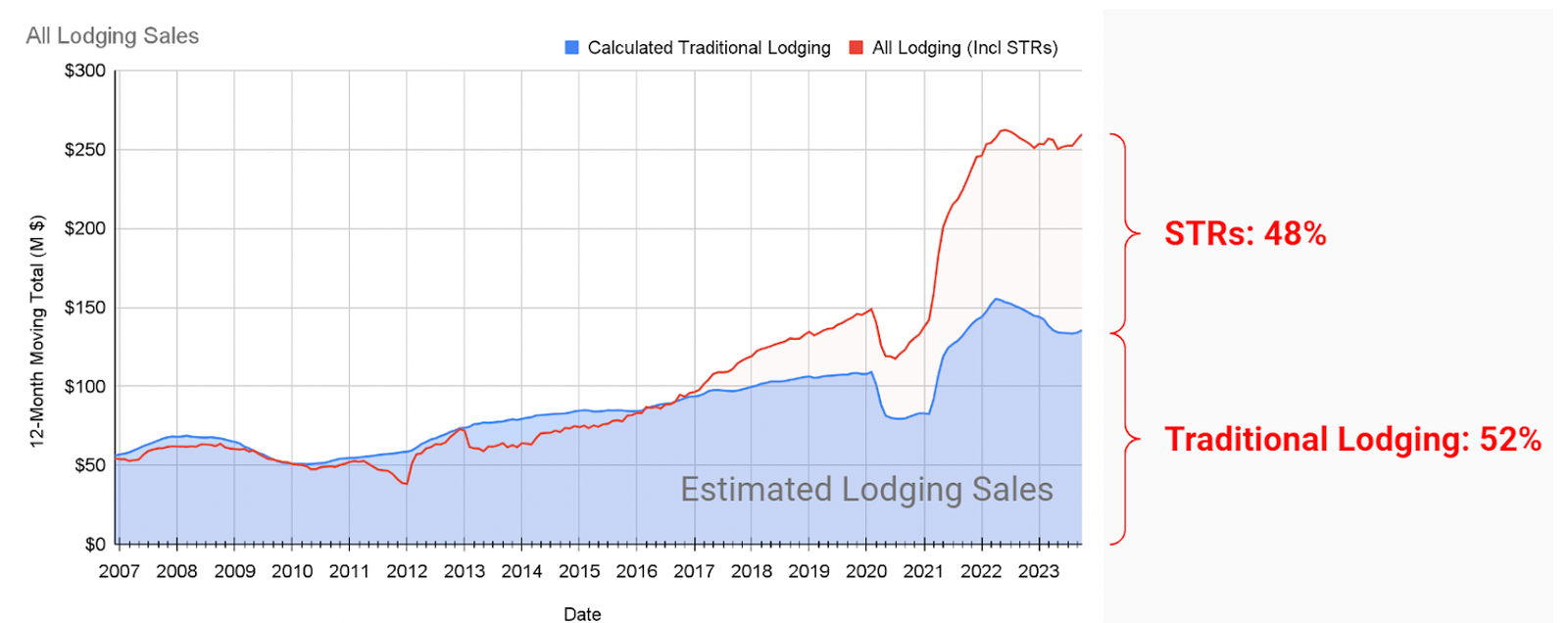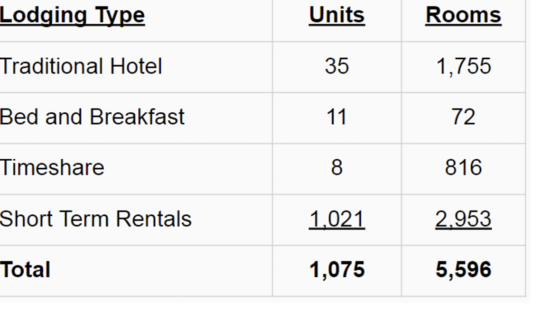By Mark TenBroek, January 1, 2024
As we enter the New Year of 2024 the Sedona economy seems to be doing well with Sales and Bed Taxes at almost record levels. So, what is not to like?
A quick look at the growth of Sedona Lodging sales over the past 7 years since Arizona Senate Bill 1350 (SB 1350) was passed has shown dramatic growth of both the local economy and the use of Short-Term Rentals as evidenced by the attached graphic:

While there has been significant growth of lodging overall, almost half of the total are sales from Short Term Rentals (STRs). We need to remember that STRs are in residential areas and do not have the same responsibilities for providing parking, fire protection, security, and guest assistance as traditional lodging establishments do. In addition, STRs in Sedona benefit from the lower property tax rates afforded “residential properties” that are used for commercial purposes. Traditional lodging pays higher commercial property taxes.

We also need to understand that in Sedona, traditional lodging numbers have been relatively stable over the past 15 years or so, but the number of equivalent STR rooms has rapidly increased. Today, more than half of the room options in Sedona (almost 3,000) are provided by STRs.
There certainly are some in Sedona that benefit from this additional commerce, but up to two thirds of the STRs in the community are owned by out of state owners or corporations that are extracting those dollars from the local economy.
So, with the increased sales tax and bed tax income, what may be concerns with this sector of the economy?
- Loss of Workforce – Many long-term rentals have been converted to STRs. The few that remain are not enough for the size of our workforce, so many have left Sedona. Businesses are therefore struggling to remain fully staffed.
- Loss of Community – Neighbors have been replaced by new strangers every few days or weeks. While the overall prevalence of STRs is about 17% of homes being used as STRs in Sedona, many neighborhoods have STR rates that exceed 50%. This diminishes the value to those that continue to live in Sedona. Only neighborhoods with HOAs may be afforded some protection.
- Increased Community Costs – STRs cost a community for services that a traditional hotel includes in their fees such as on-site security, visitor parking and visitor oversight staff. For STRs, these costs for local police force and code enforcement are externalized and paid by the community, unfairly reducing the cost of doing business as an STR and placing those costs on the city government, and ultimately the residents.
It is time to cap the number of allowed STRs. If STR growth continues, we could lose our community completely. Our latest census shows a reduction in the number of residents in Sedona, despite record-breaking numbers of new homes built in the community. The League of Cities and Towns unanimously endorsed amendments to place restrictions on the number of overall STRs and the concentration of STRs allowed in a neighborhood.
The City of Sedona City Council and staff understands this issue and have worked hard to implement the limited local regulation that they can by making sure that STRs are licensed, have valid and accessible local contact information and have valid Transaction Privilege Tax (TPT) licenses. But more regulation is needed to limit the impact on the community.
The next Arizona Legislature session starts January 8th. We understand that Selina Bliss (LD1) and John Kavanaugh (LD3) will be coming forward with bills consistent with the League amendments.
So, what can you do?
- Watch for updates on the bills brought forward. Thank Senator Bennett and Representatives Bliss and Nguyen for their action to deliver more local control and management of STRs.
- Educate friends in other parts of Arizona on the importance of passing legislation to cap STRs. Ask them to contact their senator and representatives and encourage them to support the bill.
Without citizen pressure these bills will not pass. We can’t wait any longer! We need action now!





